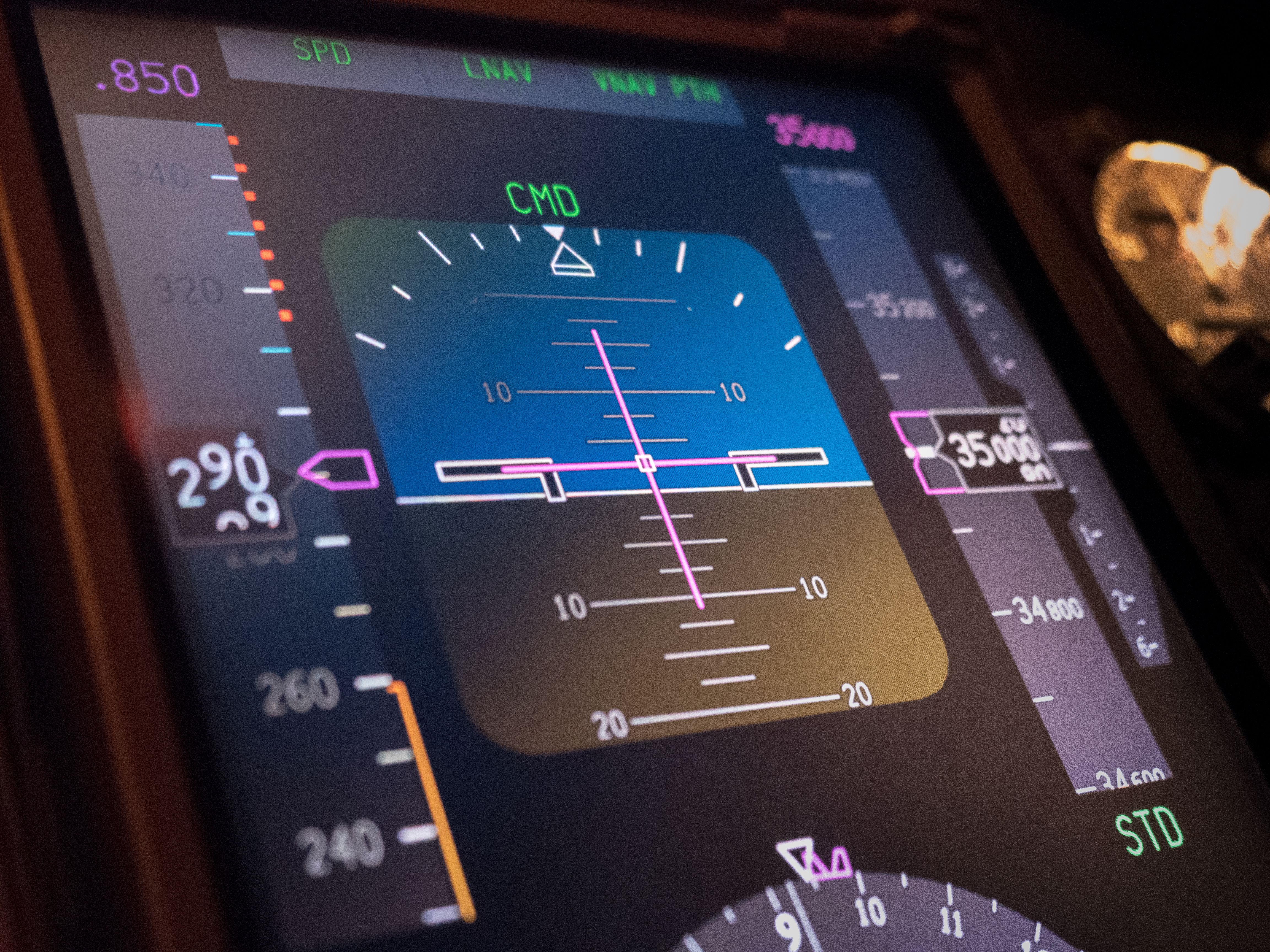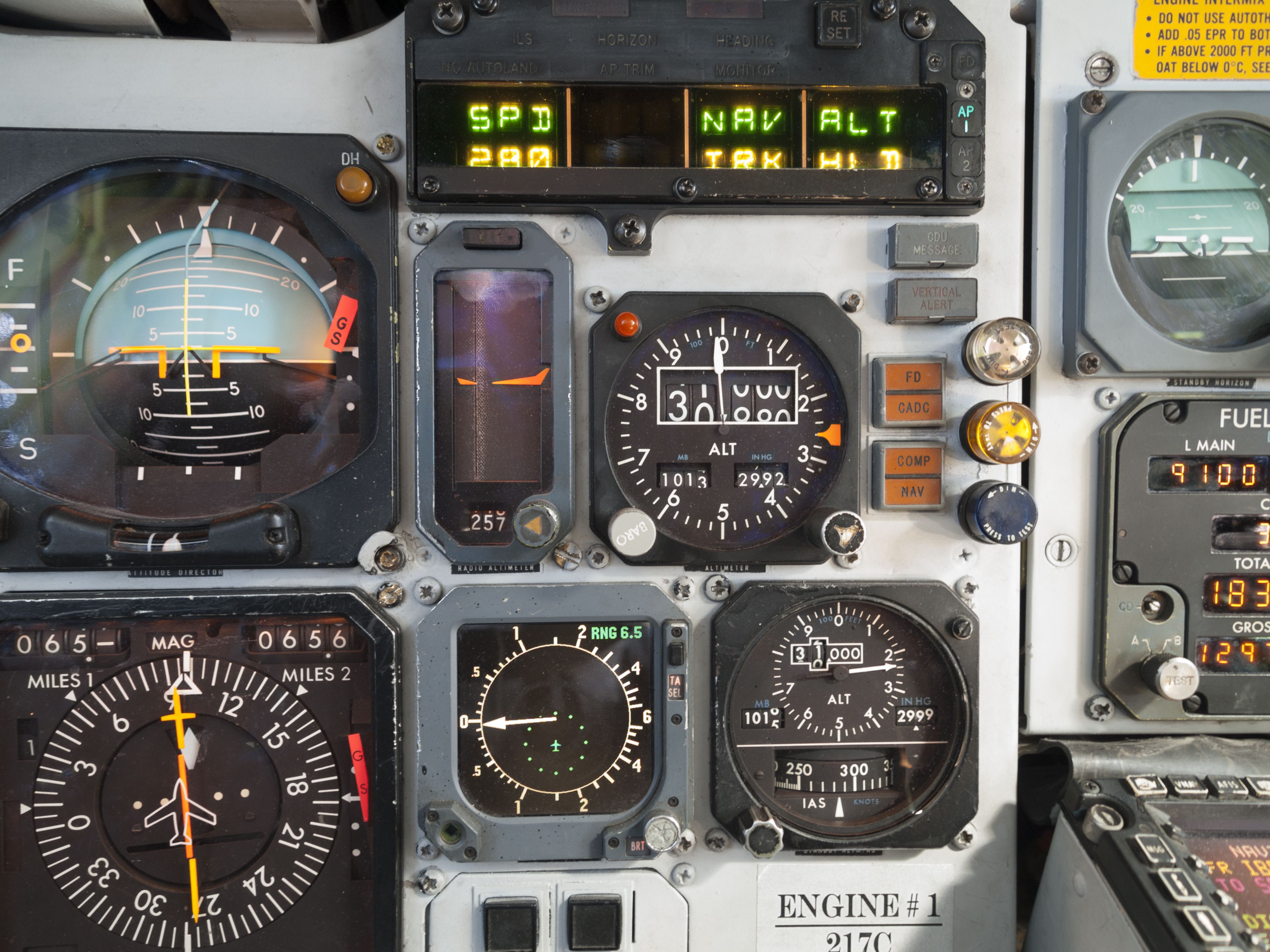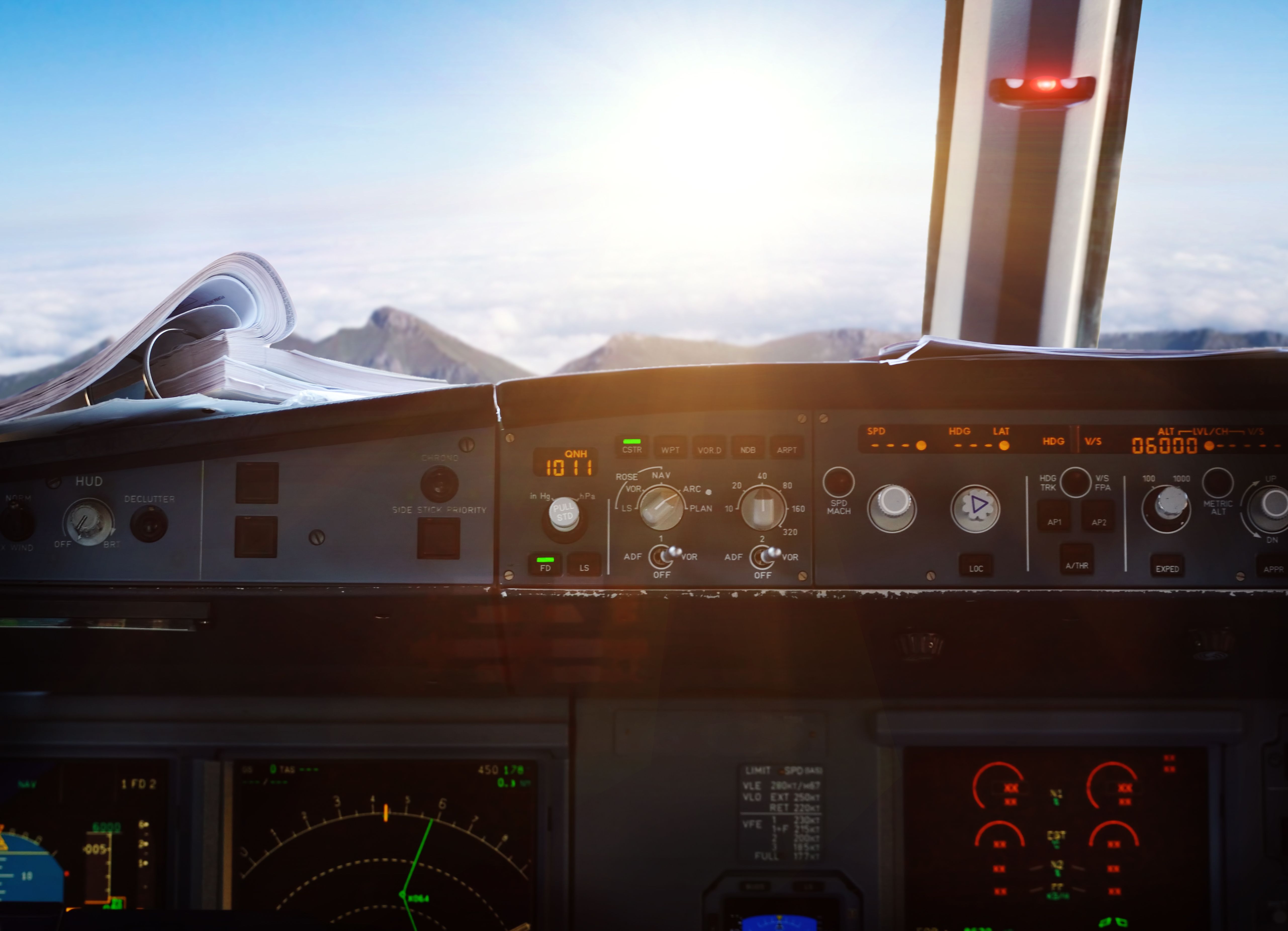Modern aircraft have countless aids to enhance pilots' situational awareness. One of the most commonly used aids is the flight director. Let's briefly talk about what a flight director is, what it looks like, and the considerations pilots make when using it.
What is a flight director?
The flight director (FD) is an element of a plane's automatic flight control system. Not all airplanes have flight directors—many general aviation planes and those without autopilot do not. Older commercial aircraft with traditional instrumentation have flight director command bars integrated into the attitude indicator.
Advanced, multidimensional flight directors are available on aircraft with modern, glass panel primary flight displays that incorporate information from air data computers, accelerometers, and GPS data. Aircraft which do not have flight directors require pilots to fly using "raw data," which means understanding and applying pitch and power settings to achieve the desired flight path.
Get the latest aviation news straight to your inbox: Sign up for our newsletters today.
Flight director styles
Not all flight directors look the same. The most traditional flight director display is the command bar layout (sometimes called the "v-bar"). Command bars are a set of two triangular lines that match the shape of the airplane symbol on the primary flight display or attitude indicator. The command bars move up, down, left, and right as a guide for the flying pilot to match to fly the path that has been selected in the flight management system. When the autopilot is engaged, the pitch and roll servos follow the flight director's commands on all turns, level-offs, and descents. Most Canadair Regional Jets feature this type of flight director.
On newer aircraft, a common flight director layout is the dual crossbar. The crossbars form a symmetric T shape when the aircraft is on course to meet the selected heading and altitude. When a new heading or altitude is selected, the crossbars deflect in the direction towards which the pitch and heading must change. For example, if the plane's heading selector is changed from 180 degrees to 270 degrees, the required right turn would be indicated by the vertical crossbar defecting to the right.
Suppose pilots are in level flight and select a higher altitude. In that case, the horizontal crossbar moves up, indicating that the pilot (or autopilot, if engaged) needs to increase the pitch to climb. Examples of planes that feature this type of flight director are the Airbus A320 family and the Boeing 787.
Human factors
Flight directors are phenomenal aids to situational awareness for pilots. However, the flight director's guidance must always be measured against the intended flight path. Flight directors move in accordance with selected flight management system modes. If a pilot incorrectly enters information into the computer, the flight director commands a flight path that will execute the selected path irrespective of external factors. For example, if a pilot selects to descend to an altitude lower than the terrain, the flight director will command a descent without consideration for the threat. Incorrect inputs lead to incorrect flight paths. As can be said, "garbage in, garbage out." This is why it is so essential for pilots to be constantly vigilant, whether flying manually or while managing auto-flight.
Want answers to more key questions in aviation? Check out the rest of our guides here.
Flight directors help pilots distinguish precise roll and pitch inputs, especially in high-workload environments like the initial climb and on final approach. At the same time, pilots must be aware of what path the flight director is guiding the aircraft to fly. The flight director is only as good as the information pilots give to the flight management computer.



